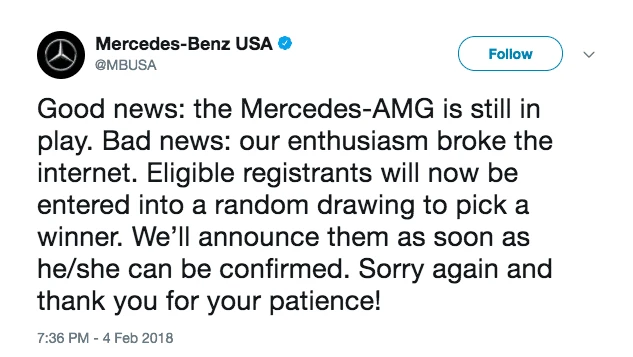The Big Game's Biggest Loser? Brands Without Mobile
by Katie Huston | Last Updated: Feb 7, 2018
by Katie Huston | Last Updated: Feb 7, 2018
This past weekend was the Big Game, and we’ve got some good news for Tom Brady–you’re not the only one that fumbled this year.
Some come for the game, but let’s be honest–a lot of us are there for the commercials. The Big Game is the world’s biggest platforms for brands to engage their customers and capture the attention of millions of viewers, which explains the massive price tag on even the tiniest air-time. But this year, the consensus was that the ads just didn’t stack up, and I think I know why. Many of the featured brands missed out on a major opportunity to engage customers on the device that 100 million of them already had in-hand...their smartphones. While many brands fumbled on tying mobile to their ad campaigns, a few did try their hand. In the spirit of The Big Game, we’re handing out a few “Best In Mobile” awards:
Most Engagement Potential (But They Missed Out) A big advertising win was Amazon’s Alexa commercial, which featured celebrities like Gordon Ramsey, Cardi B, and Rebel Wilson. The AI device lost her voice and the celebs stepped in to help answer questions from Alexa owners. With the recent release of the Google Home and Apple’s Homepod, Amazon chose the right players to drum up more excitement around the Echo device. But, Amazon missed an important link to the viewers. When viewers tried to ask their Echo “What was your favorite Big Game commercial?”, Alexa responded that she didn’t have an opinion on that. Amazon missed a milestone of an opportunity to engage after the game by continuing the commercial’s joke.
Best Idea (With A Not-So-Great Execution)

Mercedes-Benz heavily promoted their release of the new Mercedes-AMG C43 Coupe with a fun and interactive game called “Last Fan Standing”, where fans could win the car by following a streaming video of a virtual car on a football field with their finger held to their phone. If at any time, you let off the car with your finger, you were out. The last fan “standing” would win the car. Mercedes had a good idea, but not the resources to carry through. So many fans tried to play that the game crashed and Mercedes released a tweet, turning the endurance game into a random draw.
While we have to give them props for working a mobile element into their gameday ad strategy, they just didn’t have the bandwidth to follow through. And many people weren’t happy.
The Big Winner And our big champion...Avocados From Mexico! For the last few years, this Texas brand has made significant waves–from being the first produce company to run a Big Game TV ad to capturing the most post-game mentions on social media this year. This year’s ad campaign featured a make-believe biodome world that has sealed all the terrible things outside and kept everything good inside (including massage chairs and 90s celebrity Chris Elliott), but things go awry when the biodome dwellers realize that the chips were left outside. This zany and funny way to propel the avocado-on-everything trend garnered more than 83,000 mentions on Twitter. They followed up the commercial with an invitation to join them on their website’s Guac World feature, where emoji brand Inmoji combines your best selfie with an avocado emoji. The Inmoji feature lives inside of the virtual dome showcased on Avocado From Mexico’s home website and your personalized Inmoji can be sent to friends on Facebook Messenger, iMessage, Kik, and the Inmoji app. They hit the mark on pulling the campaign launch from the pre-game teasers, to the commercial, to the post-game interactives, keeping it funny and light the entire time.
As the commercial spots for in-game advertising grow more and more costly, it’s important for brands to connect with viewers outside of just the TV world in order for their gameday investment to pay off. With the scale shifting from television and radio advertising to mostly mobile, brands have to become more innovative in their marketing campaigns. As for next year? We hope to see a lot more mobile, and we’ll even throw in an early prediction for more VR and AI technology incorporated in the Big Game ad experience.